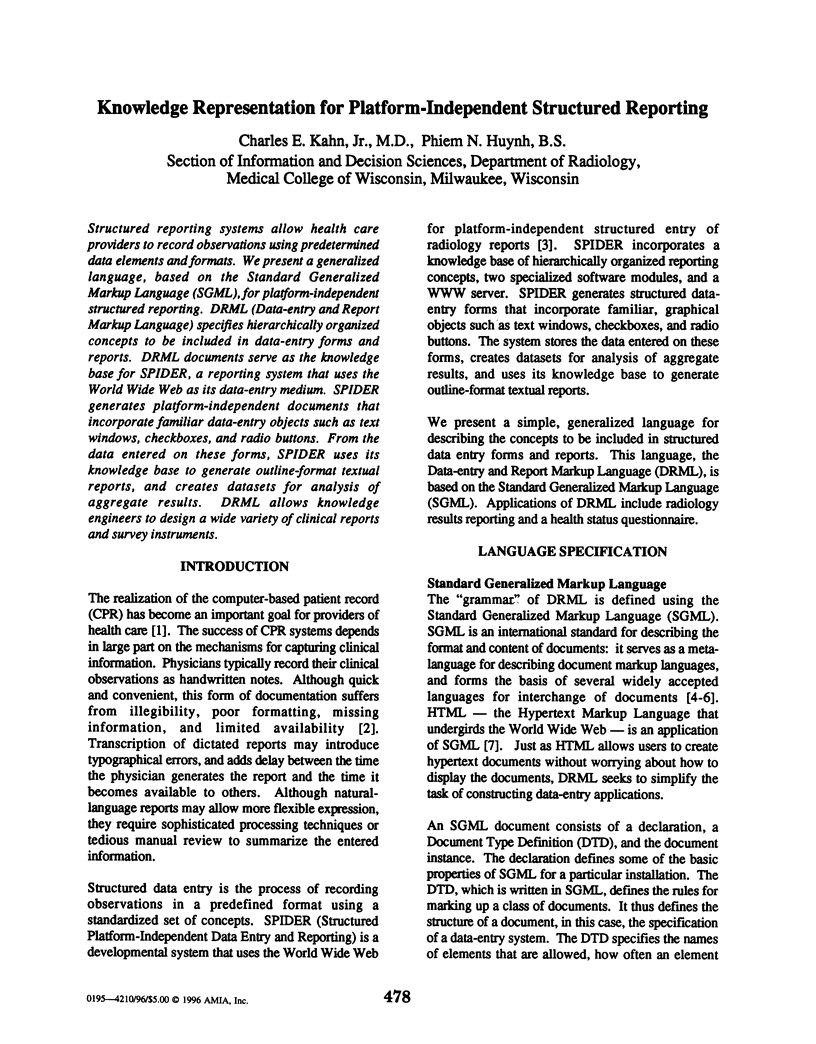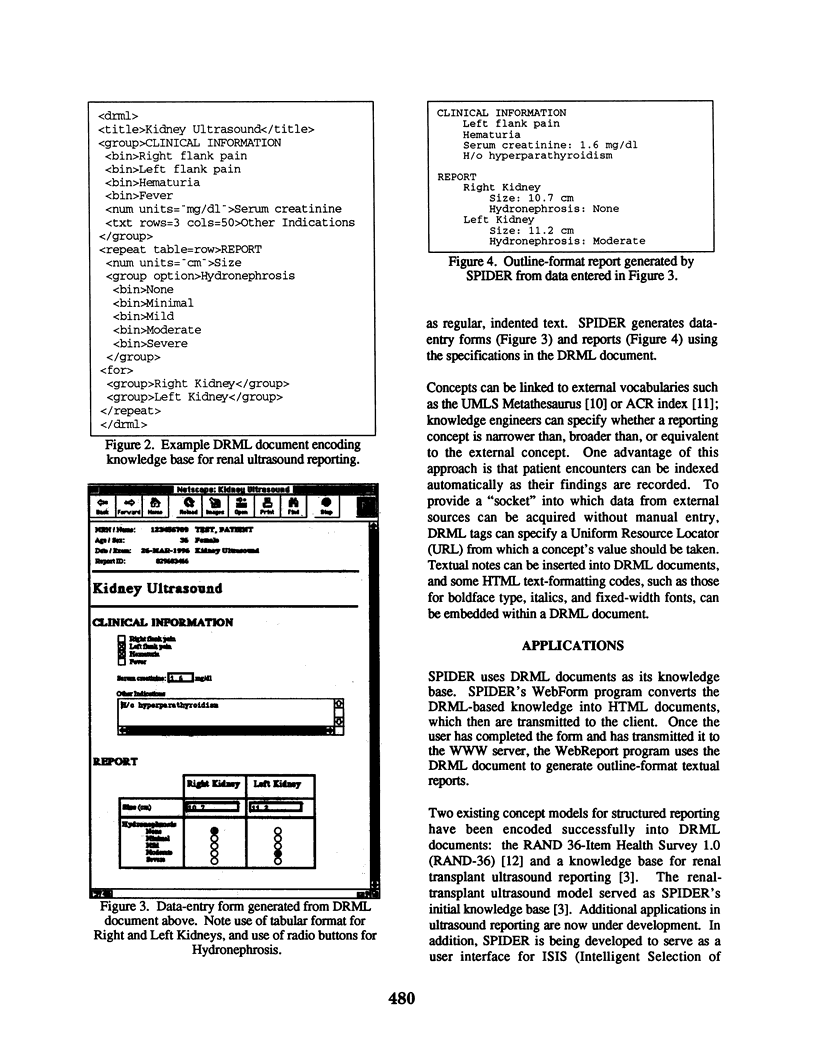Abstract
Structured reporting systems allow health care providers to record observations using predetermined data elements and formats. We present a generalized language, based on the Standard Generalized Markup Language (SGML), for platform-independent structured reporting. DRML (Data-entry and Report Markup Language) specifies hierarchically organized concepts to be included in data-entry forms and reports. DRML documents serve as the knowledge base for SPIDER, a reporting system that uses the World Wide Web as its data-entry medium. SPIDER generates platform-independent documents that incorporate familiar data-entry objects such as text windows, checkboxes, and radio buttons. From the data entered on these forms, SPIDER uses its knowledge base to generate outline-format textual reports, and creates datasets for analysis of aggregate results. DRML allows knowledge engineers to design a wide variety of clinical reports and survey instruments.
Full text
PDF




Selected References
These references are in PubMed. This may not be the complete list of references from this article.
- Cimino J. J., Socratous S. A., Clayton P. D. Internet as clinical information system: application development using the World Wide Web. J Am Med Inform Assoc. 1995 Sep-Oct;2(5):273–284. doi: 10.1136/jamia.1995.96073829. [DOI] [PMC free article] [PubMed] [Google Scholar]
- Glowniak J. V. Medical resources on the Internet. Ann Intern Med. 1995 Jul 15;123(2):123–131. doi: 10.7326/0003-4819-123-2-199507150-00008. [DOI] [PubMed] [Google Scholar]
- Kahn C. E., Jr, Anderson G. M. Case-based reasoning and imaging procedure selection. Invest Radiol. 1994 Jun;29(6):643–647. doi: 10.1097/00004424-199406000-00009. [DOI] [PubMed] [Google Scholar]
- Kahn C. E., Jr CHORUS: a computer-based radiology handbook for international collaboration via the World Wide Web. Radiographics. 1995 Jul;15(4):963–970. doi: 10.1148/radiographics.15.4.7569141. [DOI] [PubMed] [Google Scholar]
- Kahn C. E., Jr, Wang K., Bell D. S. Structured entry of radiology reports using World Wide Web technology. Radiographics. 1996 May;16(3):683–691. doi: 10.1148/radiographics.16.3.8897632. [DOI] [PubMed] [Google Scholar]
- Lindberg D. A., Humphreys B. L., McCray A. T. The Unified Medical Language System. Methods Inf Med. 1993 Aug;32(4):281–291. doi: 10.1055/s-0038-1634945. [DOI] [PMC free article] [PubMed] [Google Scholar]
- Poon A. D., Fagan L. M., Shortliffe E. H. The PEN-Ivory project: exploring user-interface design for the selection of items from large controlled vocabularies of medicine. J Am Med Inform Assoc. 1996 Mar-Apr;3(2):168–183. doi: 10.1136/jamia.1996.96236285. [DOI] [PMC free article] [PubMed] [Google Scholar]
- Richardson M. L. A World-Wide Web radiology teaching file server on the Internet. AJR Am J Roentgenol. 1995 Feb;164(2):479–483. doi: 10.2214/ajr.164.2.7839993. [DOI] [PubMed] [Google Scholar]
- Schatz B. R., Hardin J. B. NCSA Mosaic and the World Wide Web: Global Hypermedia Protocols for the Internet. Science. 1994 Aug 12;265(5174):895–901. doi: 10.1126/science.265.5174.895. [DOI] [PubMed] [Google Scholar]


